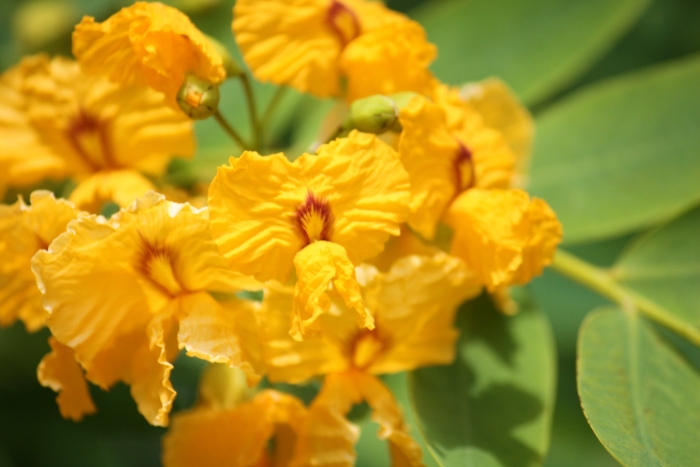Tipu Tree
(Tipuana tipu)
Tipu Tree (Tipuana tipu)
/
/

Jan Smith
CC BY 2.0
Image By:
Jan Smith
Recorded By:
Copyright:
CC BY 2.0
Copyright Notice:
Photo by: Jan Smith | License Type: CC BY 2.0 | License URL: https://creativecommons.org/licenses/by-sa/2.0/ | Uploader: jemasmith | Publisher: Flickr |














































































Estimated Native Range
Summary
Tipuana tipu, commonly known as Tipu Tree, is a deciduous tree native to Bolivia and northwestern Argentina, where it is found in a variety of habitats including montane forests, inter-Andean valleys, and along riverbanks. It can grow up to 30 meters (98 ft) in height and 20 meters (66 ft) wide, with a broad, spreading canopy that provides generous shade. The tree is characterized by its pinnate leaves and showy, bright yellow flowers that appear in racemes, blooming profusely in the late summer and attracting pollinators.
The Tipu Tree is valued for its rapid growth and dense foliage, making it an excellent choice for urban planting, street trees, and as a natural shade provider in parks and large gardens. It adapts well to a range of soil types, provided they are well-drained, and it thrives in full sun to partial shade. While it is drought-tolerant once established, regular watering is beneficial during the establishment period. Tipuana tipu is also used in reforestation projects due to its nitrogen-fixing abilities, which improve soil fertility. However, gardeners should be cautious as it can become invasive outside its native range, and its aggressive roots can damage sidewalks and foundations.CC BY-SA 4.0
The Tipu Tree is valued for its rapid growth and dense foliage, making it an excellent choice for urban planting, street trees, and as a natural shade provider in parks and large gardens. It adapts well to a range of soil types, provided they are well-drained, and it thrives in full sun to partial shade. While it is drought-tolerant once established, regular watering is beneficial during the establishment period. Tipuana tipu is also used in reforestation projects due to its nitrogen-fixing abilities, which improve soil fertility. However, gardeners should be cautious as it can become invasive outside its native range, and its aggressive roots can damage sidewalks and foundations.CC BY-SA 4.0
Plant Description
- Plant Type: Tree
- Height: 30-40 feet
- Width: 25-50 feet
- Growth Rate: Rapid
- Flower Color: Yellow
- Flowering Season: Spring, Summer
- Leaf Retention: Deciduous
Growth Requirements
- Sun: Full Sun, Part Shade
- Water: Medium
- Drainage: Medium
Common Uses
Salt Tolerant, Showy Flowers, Street Planting
Natural Habitat
Native to montane forests, inter-Andean valleys, and riverbanks in Bolivia and northwestern Argentina
Other Names
Common Names: Rosewood, Pride Of Bolivia, Tipa, Tipa Blanca, Tiputree, Tipoeboom, Pau Sangue, Tipu, Palo Mortero
Scientific Names: , Tipuana tipu, Machaerium tipu, Tipuana speciosa, Tipuana tipa, Machaerium fertile,
GBIF Accepted Name: Tipuana tipu (Benth.) Kuntze